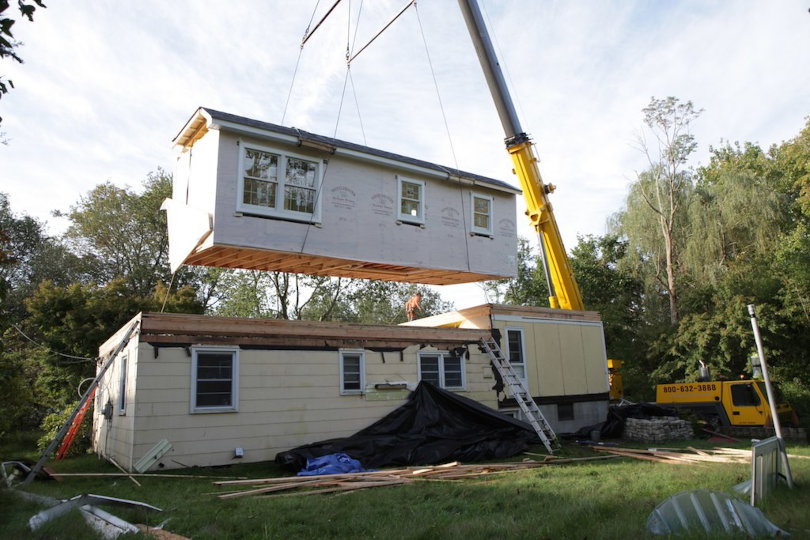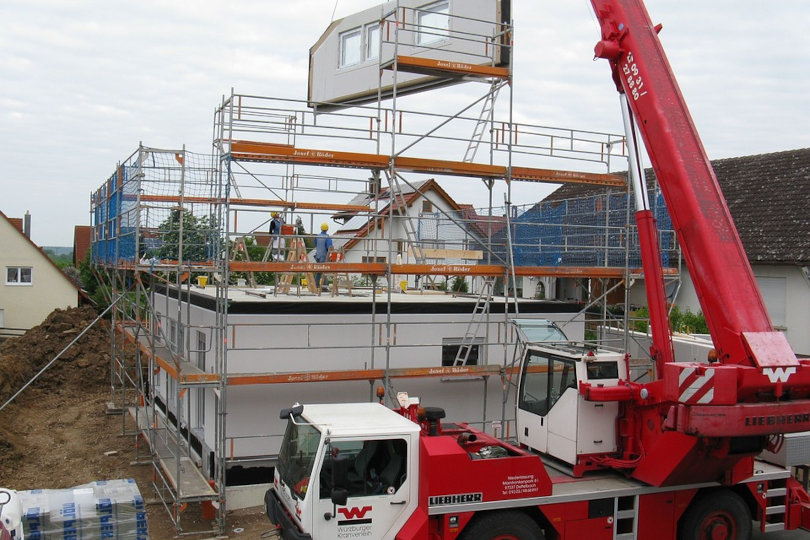Innovations in housing offer new options for developers, restoring the confidence of those who dream of home ownership as part of the American Dream

As a prospective home buyer or residential developer, the current housing market and resulting crisis is hard to ignore. Recent studies by the National Association of Realtors and Freddie Mac have revealed a shocking estimated shortage of 2-5.5 million housing units nationwide, which continues to be a hot topic in the residential real estate industry.
What once began as a coastal problem across California has now grown to affect every region of the United States. Many families and other potential home buyers sit between a rock and a hard place. Today’s home inventory is too expensive (not to mention the added costs of rising interest rates) and rents remain high, leaving many with minimal options and a drained bank account with no savings and no investment in housing to build equity and financial security.
Many housing experts have said that investing in prefabricated homes, or “factory-built” homes, could effectively meet current housing needs. And with prices soaring to new heights, buyers and developers were quickly drawn to the quality, attainable alternatives now known as factory-built homes.
This solution requires more developers to consider planning with factory-built homes in mind to overcome the barriers potential home buyers face. Today’s factor-built home options are attractive and meet creative inspirations, including multiple floor plans and available upgrades that make subdivisions and residential community developments beautiful, functional, financially achievable, and built above and beyond stringent codes. federal and federal construction and zoning compared to past decades. For developers, this new class of home is positioned to help meet buyers in areas that could hinder their transition from renting to owning.
In the past, manufactured homes have come with a slight stigma of being built to the bare minimum of standards, offering little to no aesthetic design elements, and zoned only for rural areas or parkland communities. That stigma has now dissipated with the advances in factory built homes. Companies like The Home Gallery have led the charge to challenge this status quo, offering quality homes featuring the highest federal building codes and a range of designs from traditional to contemporary that can be placed anywhere in the State of California with peace of mind. Please note that they will comply with any city or county building codes.
The benefits of buying a factory built home and the environmental impact on sustainability
Factory-built homes are a great alternative to traditional stick-built homes because they produce significantly less waste and have a smaller carbon footprint. Additionally, some companies, like The Home Gallery, offer homes equipped with factory-ready solar panels, and for every home built at their factory, The Home Gallery purchases carbon credits that they plant trees to offset environmental impacts.
The most appealing aspect of factory built homes is that they are a financially viable option and they provide a viable solution to the ongoing housing crisis. For example, Californians looking for their first home, or factory-built home in a development, can access traditional financing options through Fannie Mae MH Advantage Plans that offer three percent less with standard fixed mortgage rates. of 30 years on the house only or on a house and the purchase of the land.
Outside of a housing development, homes can be located in residential neighborhoods, park communities, and freehold land, which provides more flexibility in purchasing options for buyers by allowing them to purchase land, not just homes.
Financing is not the only attractive benefit of today’s factory-built internal market. Factory-built homes are perfect for ADUs (ancillary housing units) that can generate passive income or be used for agricultural land development.
All the benefits of buying a factory-built home are upfront: the cost, the permitting process, and the quick turnaround. Once purchased, the home’s price is locked in, excluding future costs and leaving buyers stress-free.

How and why this emerging trend will continue to grow
As experts continue to monitor housing trends and market volatility, factory-built homes are expected to continue to be a rising trend for consumers in the market in 2023.
The good news is that there is growing support at the federal level to help the housing market and its buyers meet homeownership goals. In May of 2022, the White House released its new affordable housing plan that introduces a pilot financing option for manufacturing and maintaining manufactured homes, providing incentives for zoning reform across the country.
Thanks to the lower cost of materials, faster construction timeline, and higher energy efficiency than stick-built homes, factory-built homes are affordable and can be an upscale option for buyers on a budget. The average cost of factory-built homes is 10% to 35% less per square foot than traditional homes while maintaining a simple beauty, elegance, and sustainability to fit nearly any lifestyle.